Thailand is home to an impressive variety of birds, with over 1,000 species recorded in this Southeast Asian country. From rare and endangered species to common and widespread birds, Thailand offers birdwatchers a unique opportunity to observe a diverse range of avian life.
From the large and colorful Great Hornbill to the tiny and elusive Black-naped Monarch, Thailand’s birds are a sight to behold. Whether you are a novice or experienced birder, Thailand offers a wealth of birding opportunities for everyone.
1. Siamese Fireback
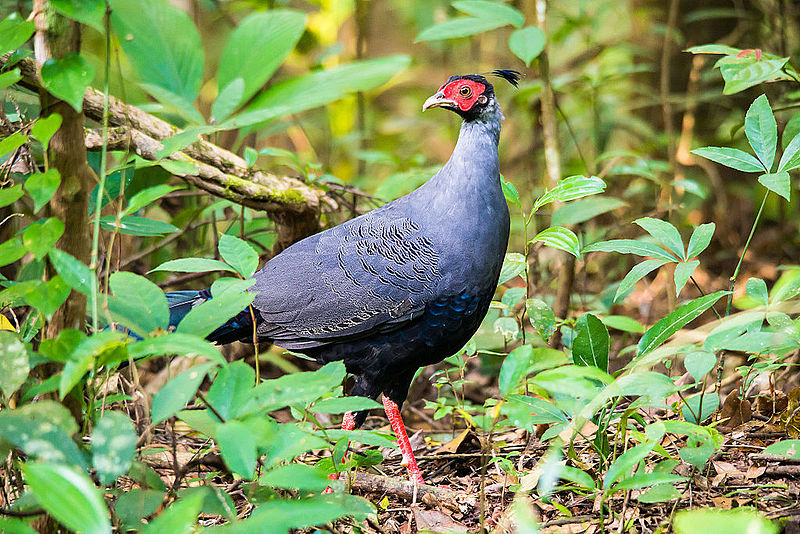
The Siamese fireback is a magnificent bird, native to Southeast Asia. It stands about 80 cm tall and has grey plumage with an extensive facial caruncle, crimson legs and feet, ornamental black crest feathers, reddish brown iris and long curved tail feathers.
The female of the species is noticeably different from the male – she sports a glossy brown body with striking blackish wings and tail feathers. This pheasant’s range stretches across Thailand, Malaysia, parts of Laos as well as western Cambodia.
They prefer lowland forests but can also be found in secondary habitats close to rivers or streams where they feed on insects like grasshoppers or other invertebrates while searching for fruits during fruiting season too.
In general these birds are shy yet curious creatures that make delightful noises throughout their habitat bringing life into any environment they inhabit.
Scientific classification:
| Kingdom | Animalia |
| Phylum | Chordata |
| Class | Aves |
| Order | Galliformes |
| Family | Phasianidae |
| Genus | Lophura |
| Species | L. diardi |
2. Silver Pheasant
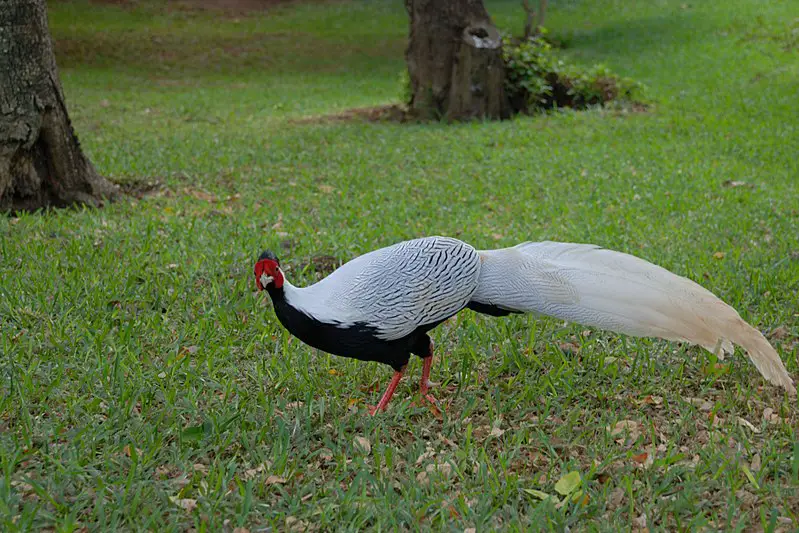
The Silver Pheasant is a stunningly beautiful bird native to parts of Southeast Asia, Eastern and Southern China. This species is known for its distinct black and white feathers in the males, while females are mainly brown.
They both have bare red faces and legs which sets them apart from other birds such as the Golden Pheasant.
The Silver pheasant lives mainly in mountain forests where it feeds on various types of insects, fruits, buds, shoots and seeds.
It has even been introduced to Argentina’s Victoria Island at Nahuel Huapi Lake.
These gorgeous creatures are also popular among aviculture enthusiasts who appreciate their majestic beauty – just be sure to provide plenty of space for these large birds if you hope to keep one as a pet.
Scientific classification:
| Kingdom | Animalia |
| Phylum | Chordata |
| Class | Aves |
| Order | Galliformes |
| Family | Phasianidae |
| Genus | Lophura |
| Species | L. nycthemera |
3. White-Eyed River Martin
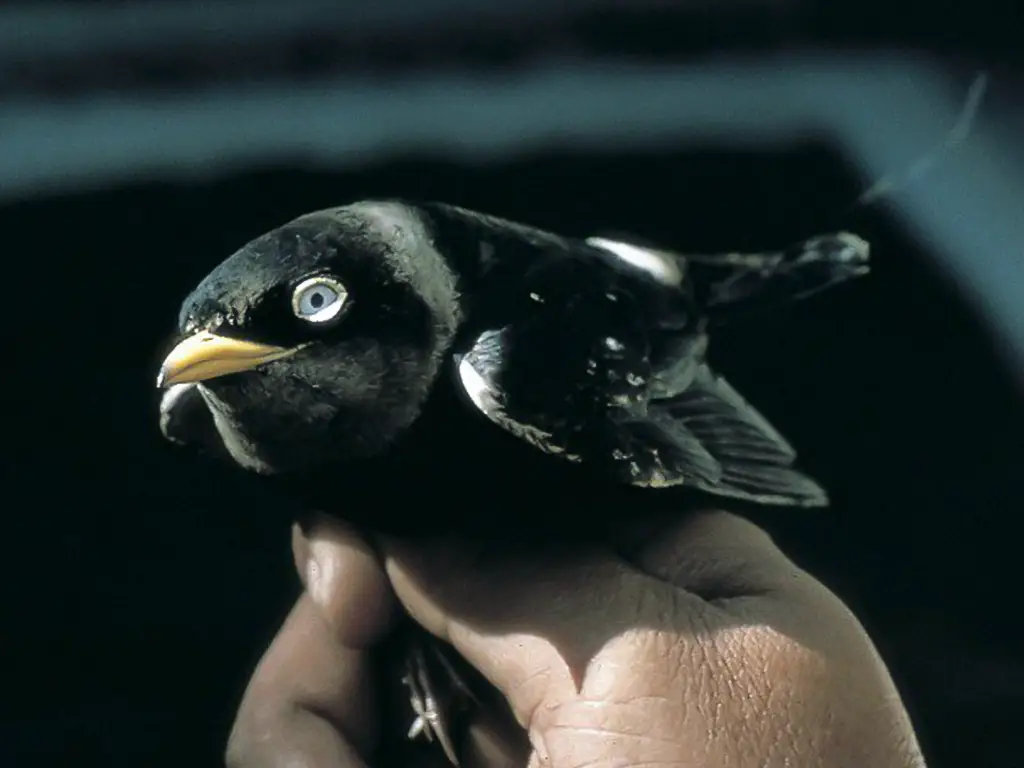
The white-eyed river martin is a rare species of swallow, only known to be found at a single wintering site in Thailand.
It was first discovered in 1968 and has significant differences from its closest relative, the African river martin.
These include its distinctively white eye color and unique tail shape that sets it apart from other swallows.
Its future remains uncertain as there have been no sightings since 1998 indicating that this species may already be extinct or critically endangered due to habitat destruction or overhunting for food by local people.
Conservation efforts are paramount if we want to save this beautiful bird before it is too late.
Scientific classification:
| Kingdom | Animalia |
| Phylum | Chordata |
| Class | Aves |
| Order | Passeriformes |
| Family | Hirundinidae |
| Genus | Pseudochelidon |
| Species | P. sirintarae |
4. Yellow-Cheeked Tit
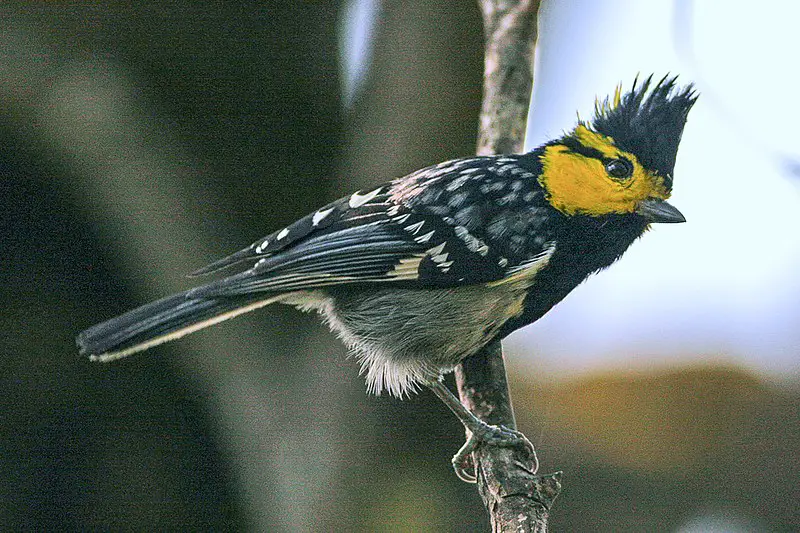
The yellow-cheeked tit is a species of bird found in Bangladesh, Bhutan, China and other parts of Asia. It inhabits subtropical or tropical lowland forests and montane forests.
The male has distinctive bright yellow cheeks that contrast sharply with the black crown on its head but the female’s plumage is generally drabber than the males’.
They are very active birds, often flitting about from tree to tree searching for insects, seeds and berries which make up their diet.
Their nests consist of small cups made out of grasses built high in trees near water sources such as streams or rivers.
These colourful little birds may be seen alone or in small groups throughout much of Southeast Asia where they are not considered threatened due to their wide range and large population numbers.
Scientific classification:
| Kingdom | Animalia |
| Phylum | Chordata |
| Class | Aves |
| Order | Passeriformes |
| Family | Paridae |
| Genus | Machlolophus |
| Species | M. spilonotus |
5. Blue Pitta
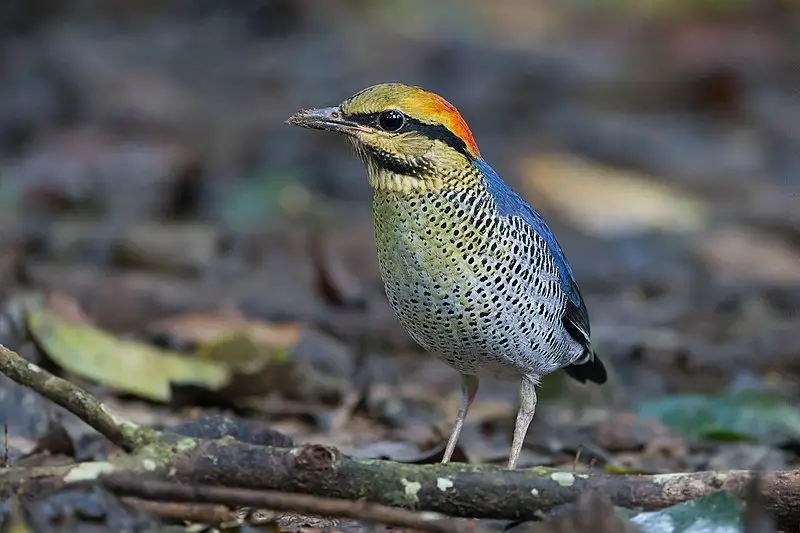
The Blue Pitta is a vibrant and beautiful bird that belongs to the family of Pittidae. It can be found in moist forests, dry forests, and across the northeastern Indian subcontinent, southern China, and Indochina.
They are generally solitary birds with stocky bodies characterized by their long tail feathers which contrast against their bright blue plumage.
The diet of these birds consists mainly of insects and other small invertebrates which they forage from the ground or low-lying trees.
Overall this species has adapted well to its environment though it remains relatively inconspicuous due to its shyness towards humans.
Scientific classification:
| Kingdom | Animalia |
| Phylum | Chordata |
| Class | Aves |
| Order | Passeriformes |
| Family | Pittidae |
| Genus | Hydrornis |
| Species | H. cyaneus |
6. Gurney’s Pitta
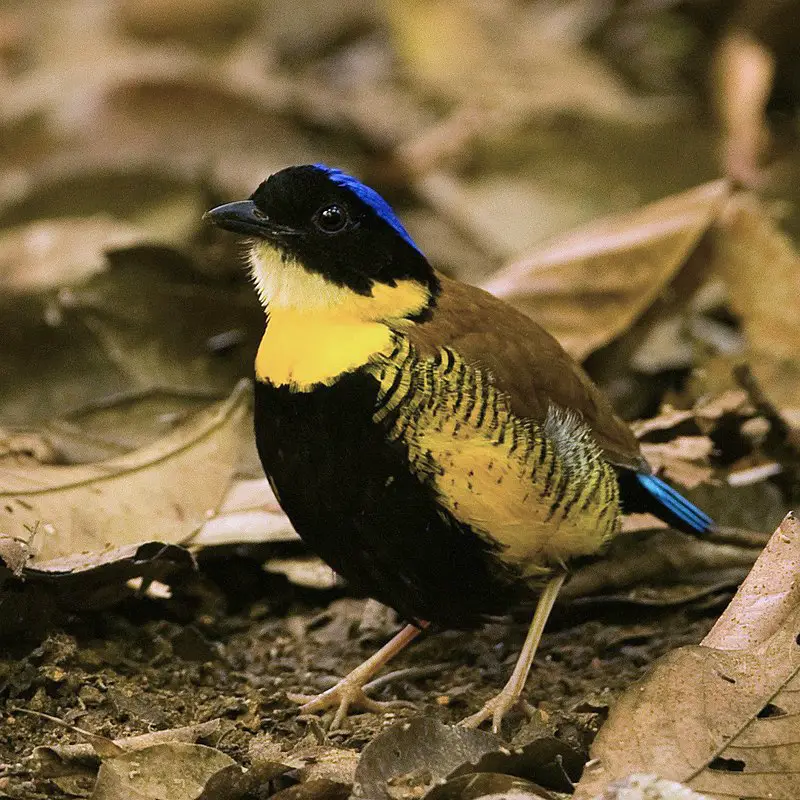
Gurney’s pitta is a medium-sized passerine bird, named after the British banker and amateur ornithologist John Henry Gurney. They can be found in the Malay Peninsula, mainly in Myanmar.
The diet of these birds consists mostly of slugs, insects and earthworms. These beautiful creatures have black bellies with white feathers on their back along with chestnut brown wings and tail feathers that create a unique contrast against its surroundings.
Their bright yellow crowns make them stand out even more. It has been suggested that logging activities are one of the main threats to this species as it destroys much needed habitat for food sources such as worms or snails during breeding season.
Conservation efforts must continue if we want to ensure these stunning birds remain part of our environment for years to come.
Scientific classification:
| Kingdom | Animalia |
| Phylum | Chordata |
| Class | Aves |
| Order | Passeriformes |
| Family | Pittidae |
| Genus | Hydrornis |
| Species | H. gurneyi |
7. Grey Peacock-Pheasant
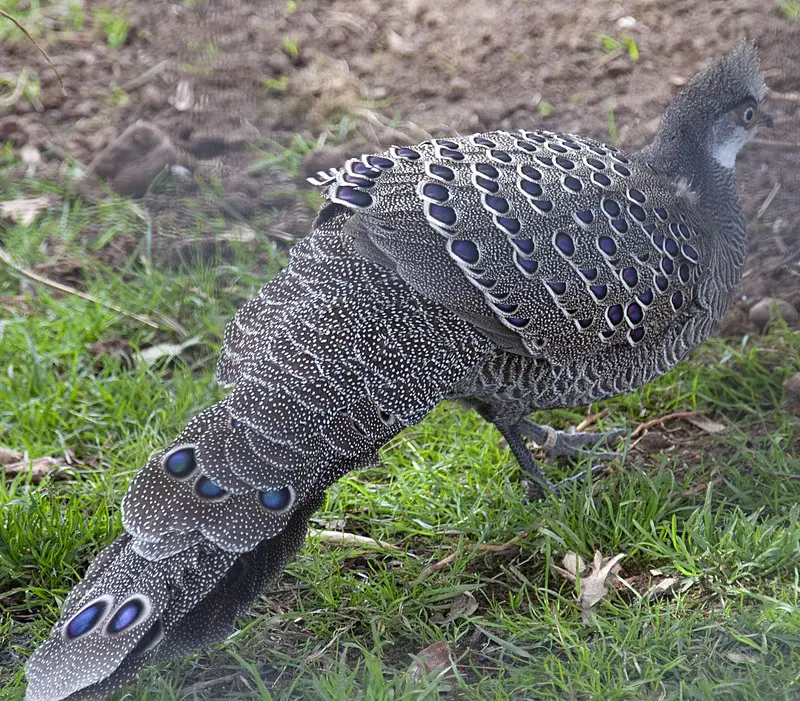
The grey peacock-pheasant, also known as the Burmese peacock-pheasant, is a large galliform bird endemic to Asia. It was first documented by English naturalist George Edwards in 1747 and depicted in his A Natural History of Uncommon Birds with an accompanying description.
The pheasant is grayish brown above with white stripes on its wings while the underparts are black and barred with white speckles; it has two spurs on each leg which gives this species its scientific name bicalcaratum meaning “two spurs”.
This beautiful bird can be seen living near wooded areas or grasslands where they feed mainly on insects and fruits.
Its primary threats include habitat destruction due to human activities such as logging, agricultural expansion, hunting for food or trade purposes.
Scientific classification:
| Kingdom | Animalia |
| Phylum | Chordata |
| Class | Aves |
| Order | Galliformes |
| Family | Phasianidae |
| Genus | Polyplectron |
| Species | P. bicalcaratum |
8. Tickell’s Brown Hornbill
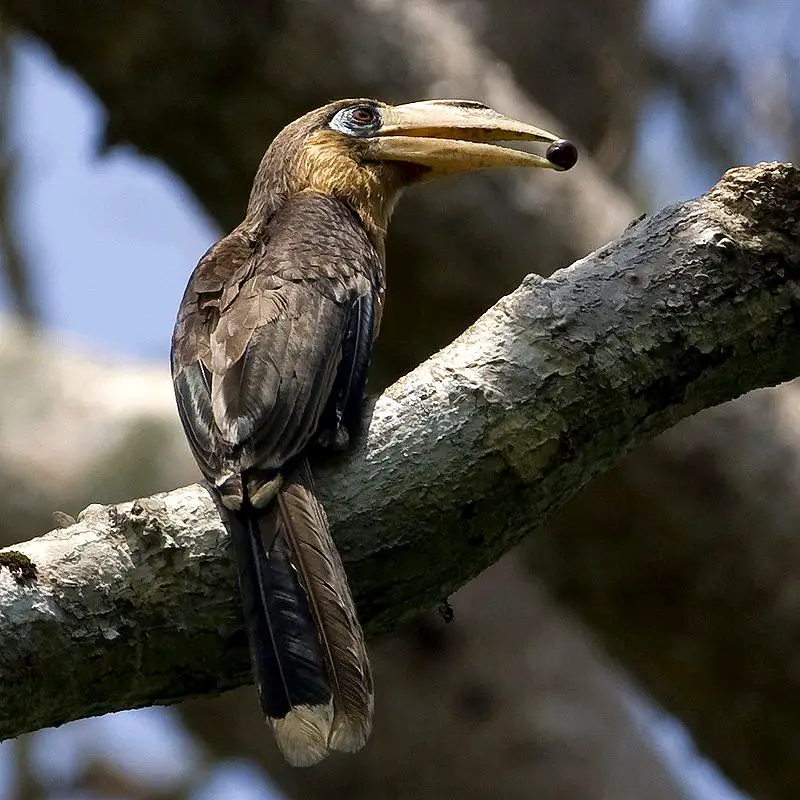
Tickell’s brown hornbill is a species of bird found in forests across Burma and western Thailand. It is a medium-sized dark-brown coloured bird with red-brown undersides, measuring up to 65 cm long.
The male has brighter rufous colouration on the cheeks than females which makes it easily distinguishable from its female counterpart. This beautiful hornbill feeds mainly on fruits and insects, sometimes even small reptiles.
They nest inside tree cavities where both parents incubate eggs for about four weeks before hatching them out into fledglings ready to explore their new home.
Scientific classification:
| Kingdom | Animalia |
| Phylum | Chordata |
| Class | Aves |
| Order | Bucerotiformes |
| Family | Bucerotidae |
| Genus | Anorrhinus |
| Species | A. tickelli |
9. Puff-Throated Bulbul
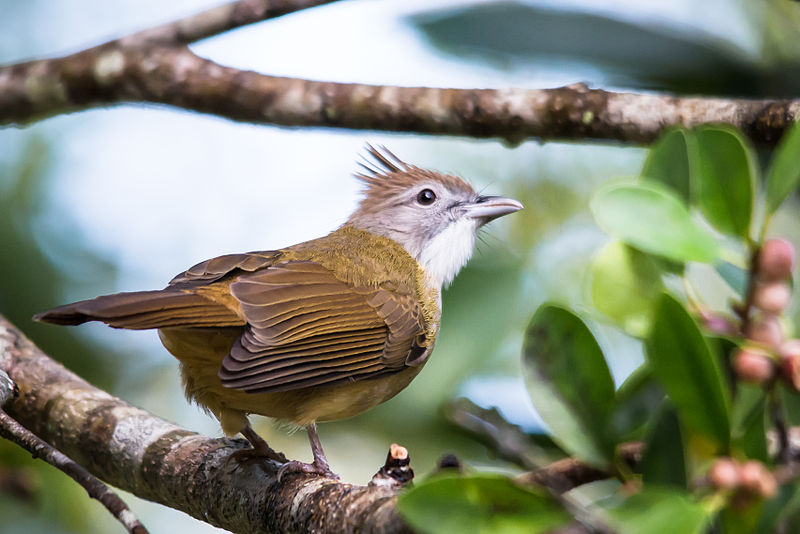
The Puff-throated Bulbul is a songbird belonging to the Pycnonotidae family. It was first discovered by Robert Swinhoe in 1870 and can be found in Southeast Asia, occupying subtropical or tropical moist lowland forests as its natural habitat.
This species of bulbul stands out from others due to its unique features; it has an olive brown upperpart with creamy buff underparts along with a blackish throat patch and crest which gives it its charming name �Puff-throated�.
Its original genus was Criniger until 2009 when researchers moved it into Alophoixus instead.
This bird loves flying around trees looking for fruits, seeds and insects that make up most of their diet.
Scientific classification:
| Kingdom | Animalia |
| Phylum | Chordata |
| Class | Aves |
| Order | Passeriformes |
| Family | Pycnonotidae |
| Genus | Alophoixus |
| Species | A. pallidus |
Also Featured In: Common Birds of Hainan,
10. Long-Tailed Minivet
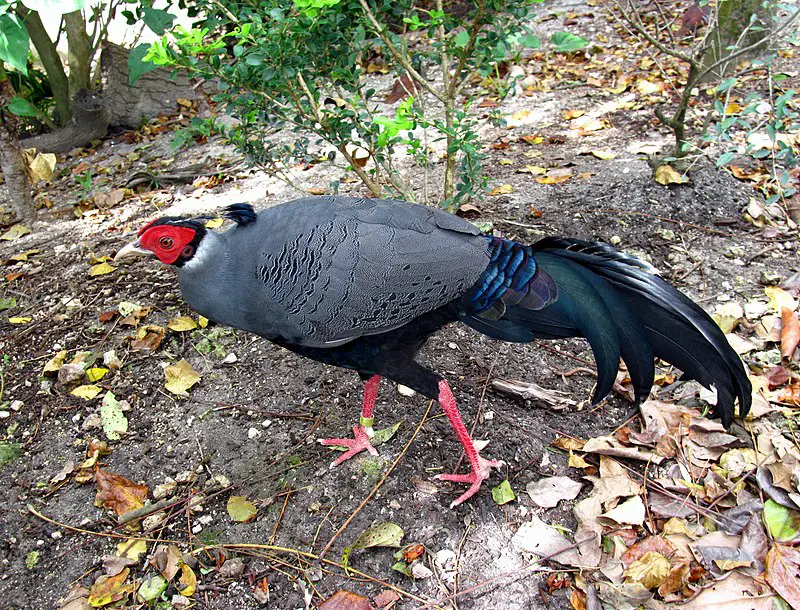
The Long-tailed Minivet is a species of passerine bird found in South and Southeast Asia. It has bright colored plumage, with black wings and tail, orange breast and yellowish head.
They live in forests or wooded hillsides at lower elevations up to 2200 meters above sea level. Their diet consists mainly of insects such as beetles, ants and grasshoppers which they catch while performing aerial sallies from open perches.
During the breeding season males display their colorful feathers to attract females for mating purposes.
The nest is built by both sexes out of twigs lined with soft material like moss or plant fibers located on high branches near tree tops overlooking an open space below them; it serves as protection against predators since its position makes it difficult for them to reach the eggs inside..
This species plays an important role in maintaining healthy ecosystems due to its insectivorous habits that help regulate insect populations but unfortunately their population numbers are decreasing possibly due to habitat destruction caused by human activities
11. Himalayan Vulture
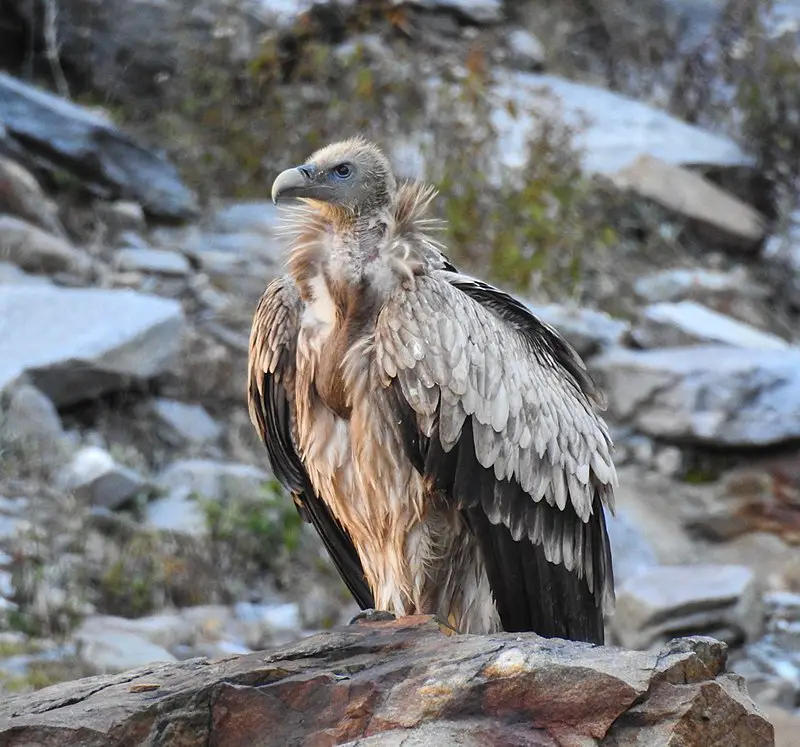
The Himalayan vulture is a majestic bird native to the Himalayas and Tibetan Plateau. It belongs to the Old World vultures, which are true raptors. With its dark brown plumage and large wingspan, it is one of two largest Old World species.
Sadly, it has been classified as Near Threatened on IUCN Red List due to loss of habitat caused by human activities such as deforestation and overgrazing in this area.
To prevent further population reduction for these birds, there needs to be increased conservation efforts that focus on protecting their natural habitats from destruction or harm so they can continue living undisturbed in their natural environment.
Scientific classification:
| Kingdom | Animalia |
| Phylum | Chordata |
| Class | Aves |
| Order | Accipitriformes |
| Family | Accipitridae |
| Genus | Gyps |
| Species | G. himalayensis |
Also Featured In: Birds of Ladakh,
12. Ochraceous Bulbul
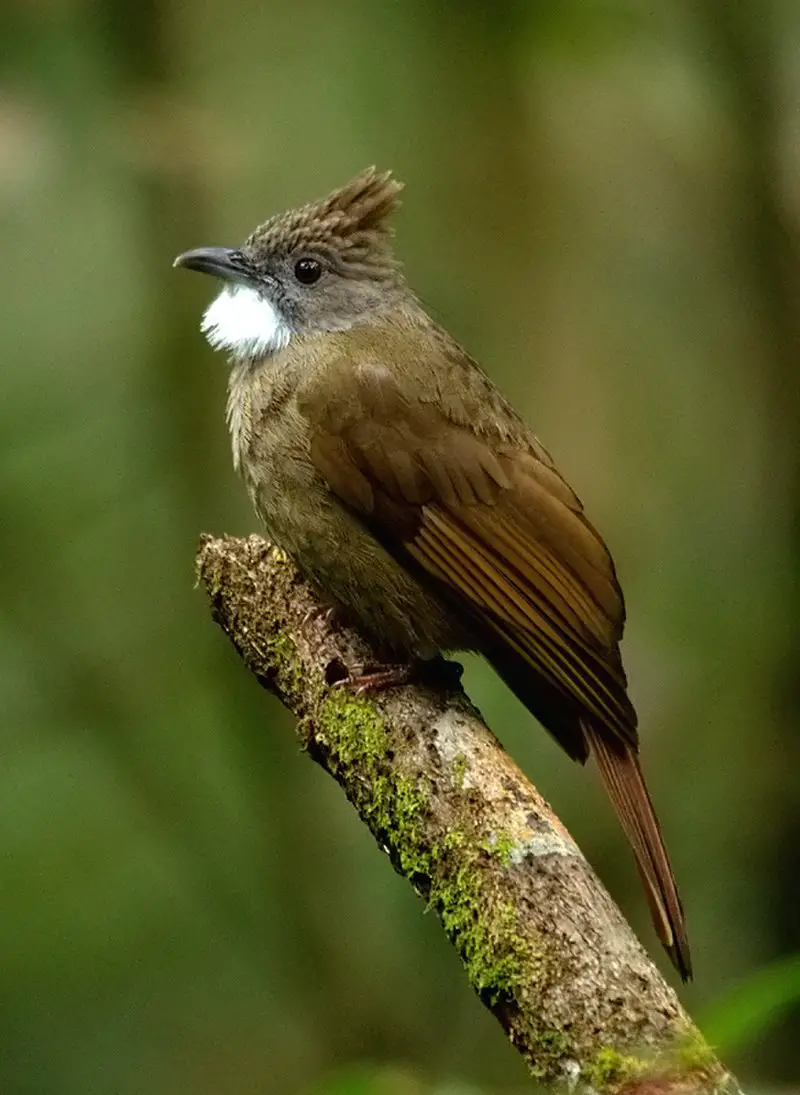
The Ochraceous Bulbul is a species of songbird belonging to the bulbul family. It mainly inhabits broad-leaved evergreen and rainforests ranging from Southeast Asia to Sumatra, up to an elevation of 1500 metres.
This bird was initially described in the genus Criniger but had been moved over time into its current classification as part of Alophoixus. The ochraceous bulbul makes itself comfortable in mid-storey vegetation such as shrubs and bushes where it can forage for food easily.
Its plumage ranges from brownish grey on top with yellow underneath which gives rise to its alternate name – Yellowvented Bulbul.
Scientific classification:
| Kingdom | Animalia |
| Phylum | Chordata |
| Class | Aves |
| Order | Passeriformes |
| Family | Pycnonotidae |
| Genus | Alophoixus |
| Species | A. ochraceus |
13. Plain-Pouched Hornbill
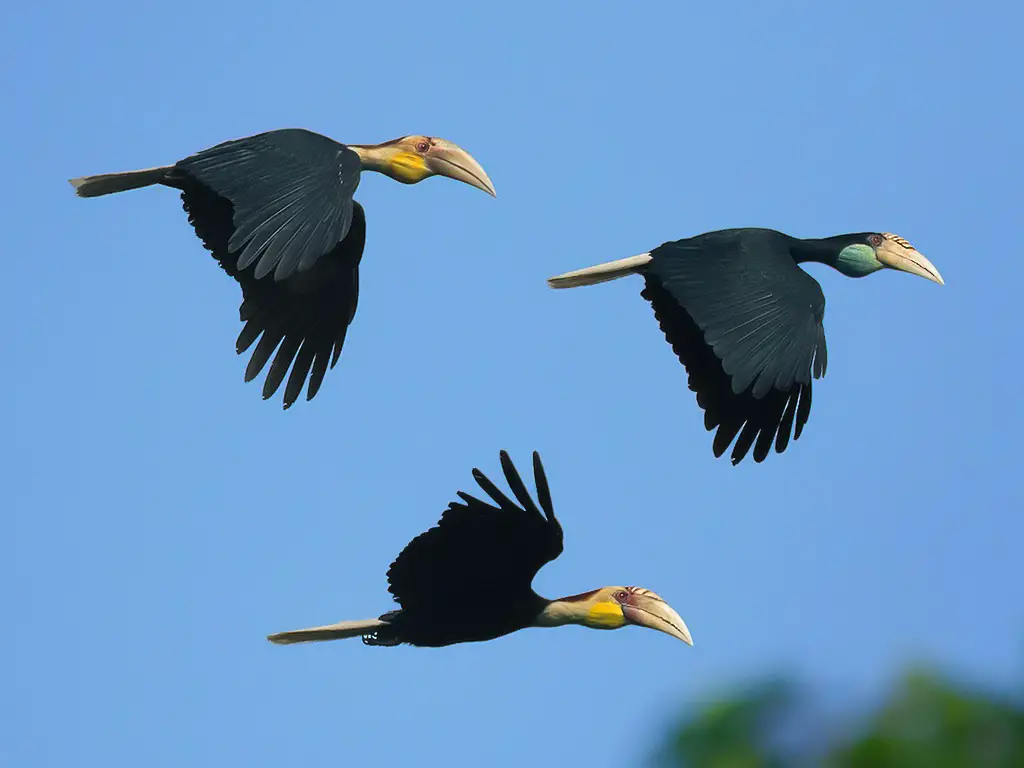
The Plain-pouched Hornbill is a species of bird found in forests located in Southern Myanmar, Western Thailand and Northern Peninsular Malaysia. It has unique features like its plain-colored pouch below the beak which distinguishes it from other hornbills.
This beautiful bird is facing threats due to habitat loss caused by human activities such as deforestation and hunting for food or decoration purposes. Conservation efforts should be taken up to protect this endangered species before they become extinct forever.
Scientific classification:
| Kingdom | Animalia |
| Phylum | Chordata |
| Class | Aves |
| Order | Bucerotiformes |
| Family | Bucerotidae |
| Genus | Rhyticeros |
| Species | R. subruficollis |
14. Giant Pitta
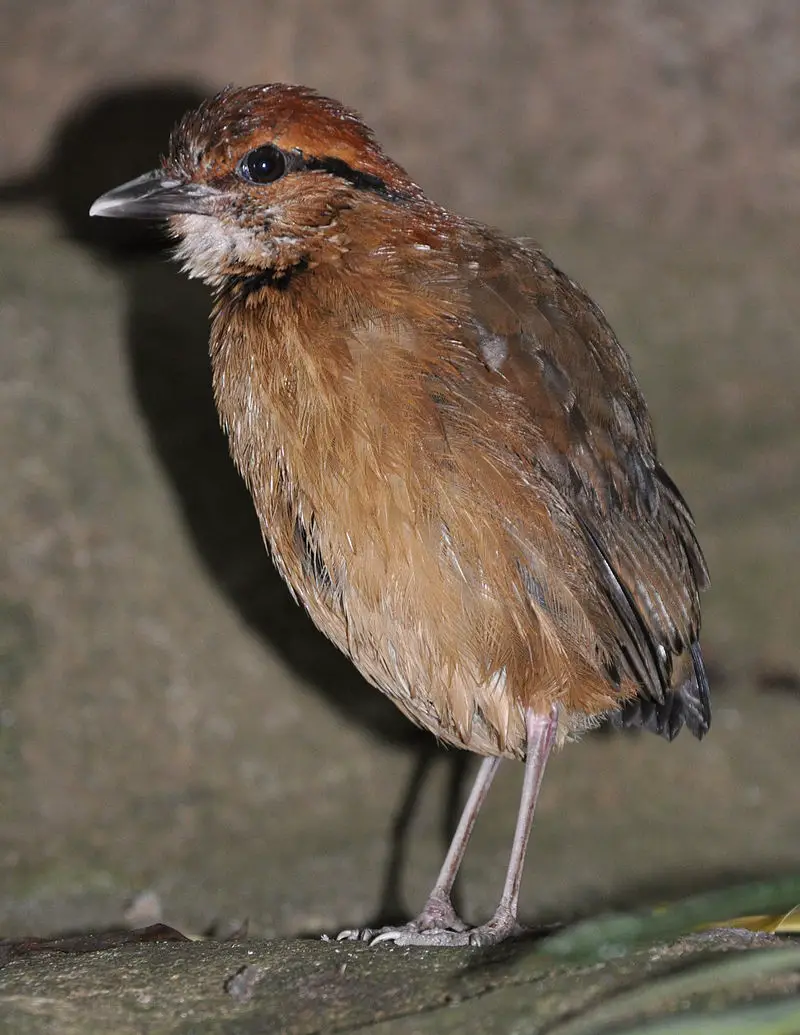
The Giant pitta is a beautiful bird belonging to the family Pittidae that can be found in Brunei, Indonesia, Malaysia, Myanmar and Thailand. It inhabits primary forest as well as tall secondary forests at elevations of up to 1,200m (3,900ft).
This species prefers densely vegetated swampy areas but has been occasionally seen in drier habitats with secondary vegetation.
Its plumage features an array of vibrant colors including blue on its back and wings while its underparts are yellowish-green with white streaks running down it sides.
The giant pitta also has bright red legs which contrast strikingly against its other feathers. A truly magnificent sight.
Scientific classification:
| Kingdom | Animalia |
| Phylum | Chordata |
| Class | Aves |
| Order | Passeriformes |
| Family | Pittidae |
| Genus | Hydrornis |
| Species | H. caeruleus |
Also Featured In: Birds that Live in Borneo Island,